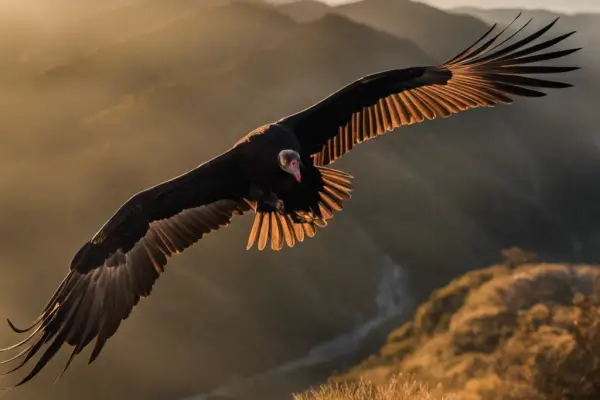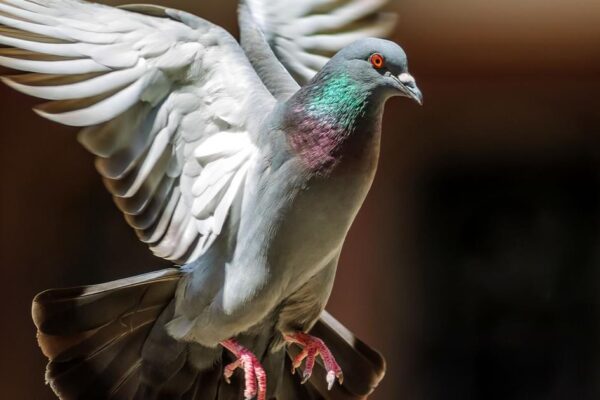European or Common Starlings (Sturnus vulgaris) and Common Grackles (Quiscalus quiscula) might seem very alike at first glance, making it challenging to tell them apart. To assist you, we’ve created this guide to highlight their differences and make identification easier.
The most noticeable distinctions between grackles and starlings include the color of their eyes, the shade of their legs, and the shape of their bills. Starlings have dark eyes, pinkish legs, and a short, slender yellow bill (in breeding birds). On the other hand, common grackles have dark legs, a dark bill, and yellow eyes. Additionally, grackles are generally bigger than starlings and have longer tails.
These are the main ways to differentiate the two, but there are more details we’ll explore below.
Differences Between Grackles vs. Starlings
Differences between Grackles and Starlings are listed below
Grackle vs. Starling: Size Comparison
When you glance at grackles and starlings, they seem quite similar in size. However, when you put them side by side, you’ll quickly notice that grackles are visibly larger than starlings.
On average, grown-up common grackles measure about 11 to 13 inches long. Their wingspan stretches between 14 to 18 inches, and they weigh around 2.6 to 5 ounces. Generally, males are bigger than females.
Meanwhile, starlings usually measure between 7.5 to 9 inches in length. Their wingspan falls around 12 to 17 inches, and their weight ranges from 2 to 3.6 ounces.
Grackle vs. Starling: Eyes Comparison
If you’re unsure about telling a grackle apart from a starling, take a look at their eyes. The eyes can help you quickly tell these two birds apart.
Common grackles have pale yellow eyes with dark centers. Meanwhile, common starlings have dark eyes.
Grackle vs. Starling: Legs Comparison
If you can’t get close to look at their eyes, try spotting their legs. This can help you distinguish between a grackle and a starling in your backyard.
Grackles have dark legs that look gray or black. On the other hand, starlings have pink legs. However, young starlings have somewhat grayish legs.
Also Read: Hawks vs Falcons
Grackle vs. Starling: Bill Comparison
Another difference between grackles and starlings is their bills, which can change based on the time of year. Still, comparing their bills is an easy way to tell them apart.
Grackles have thick, dark gray or black bills. The upper part of the bill has a slight downward curve.
For starlings, their bills change color depending on the season. In winter, their long, thin bills are black, and in summer, they turn yellow. So, you might find it easier to differentiate them by their bills in summer.
Grackle vs. Starling: Tail Comparison
At first glance, grackles and starlings have similar-looking tails. But if you look more closely, you’ll see some key differences.
Grackles have long tails that can be almost as long as their bodies. Females usually have shorter tails than males. Sometimes, a small orange patch is visible on the tail when they’re flying.
On the other hand, starlings have relatively short tails. On average, a starling’s tail is about 2.3 to 2.7 inches long.
Grackle vs. Starling: Coloration Comparison
While grackles and starlings might seem alike in appearance, they do have some differences in their plumage.
Grackles mostly have black feathers on their wings, back, and belly. Their head, neck, and breast feathers shine with blue, green, or purple iridescence. Young grackles look mostly brown.
Starlings, like grackles, have iridescent black plumage with green or purple hues and white speckles. However, their plumage changes between winter and summer. Starlings resemble grackles more in winter with speckled feathers and black bills. In summer, their speckled feathers disappear, and their bills turn yellow. Juvenile starlings are mostly grayish-brown, similar to grackles.
Similarities between Common Grackles and European Starlings
The Common Grackle and European Starling are birds that have things in common. One thing they share is their shiny, colorful feathers that seem to change colors when light hits them. These feathers make them look special and eye-catching.
During the cold months, European Starlings change how they look to be more like Common Grackles. Their feathers become darker, and their beaks turn black. Their feathers also get more spots and lose some of their bright colors. This change helps them blend in better with the winter surroundings.
Both birds have similar beaks that are about the same length and shape. However, if we look closely, we’ll notice that European Starlings have beaks that are a bit longer and thinner compared to the Common Grackles.
Another thing they do the same is that they like being with other birds. They form big groups and fly together in the sky. It’s like they’re having a bird party up there! Being in a group helps them feel safer and find food more easily.
So, in simple words, these two kinds of birds look alike because of their shiny feathers and similar beaks. They also act alike by hanging out with their bird buddies in the sky.
Also Read: English Budgies vs American Budgies
Fascinating Facts about the Common Grackle
The Common Grackle belongs to a family called Troupials and Allies (Icteridae) which includes 105 bird species. These birds are found in North and South America. Their sharp bills help them pry off tree bark or open soft fruit.
Male and female grackles can be told apart by their size. This is due to sexual dimorphism, where females are generally smaller. When near their nests, grackles warn others with alarm calls.
Like crows and ravens, grackles can recognize individual human faces. They can also mimic the sounds of other birds and sometimes even humans. Unlike many ground-hopping birds, grackles prefer walking.
Female grackles are more common than males. There are more female grackles as they live longer and need less food.
Interesting Tidbits about the European Starling
Around 100 European Starlings were introduced to New York’s Central Park in the 1890s. Now, over 200 million of these birds are in North America. The population spread from those few birds.
The starling family (Sturnidae) has 123 species worldwide, mostly in Asia and Africa. The European Starling is the most common.
European Starlings can live in various habitats if their needs are met. They often forage on lawns in cities, but during non-breeding times, they explore places like marshes, orchards, and tidal flats.
Starlings roost in trees, reedbeds, and even buildings in towns. Some winter roosts in Europe have over a million birds, and in Israel, one roost has 5 to 8 million.
Starlings have strong jaw muscles that help them dig into soil for insects. They also catch flies in the air.
Sometimes, starlings destroy other birds’ nests, which worries bird experts as it can harm native bird populations around the world.
Final Thoughts on Grackles vs. Starlings
The key to telling apart starlings and grackles lies in understanding their differences and similarities. Relying solely on their plumage colors for identification, especially at backyard feeders, might lead to confusion.
While color can be useful, it’s more effective to focus on factors like size, shape, habitat, behavior, diet, and plumage colors.
Birds in our backyard have a special connection with us, but there are times when they become a bit bothersome. When that happens, consider using methods like changing their habitat or using devices to gently discourage them without causing harm. And don’t underestimate the effectiveness of safflower as bird food.






